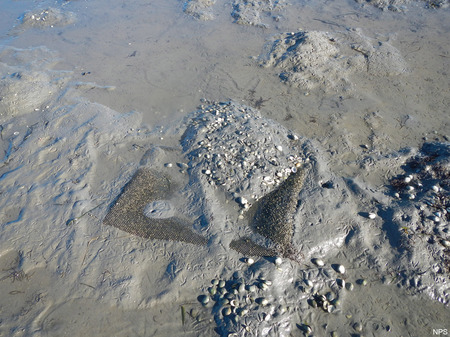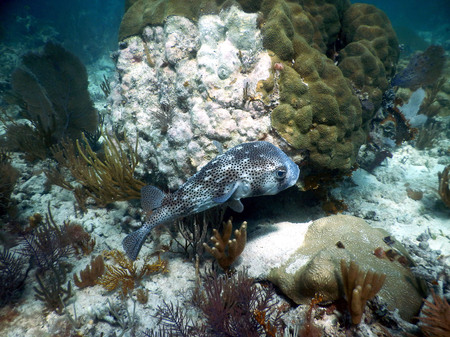At the National Parks Conservation Association, our work can often be described as a "battle of inches," with many efforts that are punctuated by small milestones achieved over extended periods of time. So when we can celebrate major victories, we not only look at the end result but also and equally importantly, all of the years of dedication and many partners who we work alongside with.
As we recognize World Water Day on March 22, Point Reyes National Seashore, our first marine wilderness on the west coast at Drakes Estero, comes to mind along with opportunities that exist to protect invaluable national park resources across the country like Biscayne National Park along on the opposite coast in South Florida.
Earlier this month, my husband and I escaped the endless east coast winter and traveled to California for a celebration with our many partners and NPCA colleagues of the wilderness realization at Point Reyes National Seashore. While the marine wilderness designation became official in November of 2012, it wasn't until January 1, 2015, that the legal battles finally wrapped up and the oyster company previously occupying the space moved out, allowing for nature to take over.
The progress that has been made over such a short period of time is nothing short of amazing, and is a testament to the great work of our National Park Service leaders. In January, the park service and its team of contractors set to work, removing commercial structures, related infrastructure and debris at the site. In addition, 37,000 pounds of plastic tubes, mesh bags, and abandoned non-native shellfish, including invasive manila clams, were hauled out of the water. Also noticeable was the peaceful quiet, as motorboats no longer zoom around the estuary. The most extensive work continues, as the park service continues to remove miles of wooden racks, debris, and invasive species associated with the oyster operation from our marine wilderness area. Underwater footage of the marine debris and plastic oyster tubes washed up on the shore where elephant seals lay and beach combers walk also underscores the work that the park service still has ahead in restoring this stunning marine wilderness area.
Restoration work aside, the long-range lens shows that Drakes Estero, considered the "ecological heart" of Point Reyes National Seashore, will continue to restore itself and thrive as the gift of marine wilderness is fully realized.
On the opposite coast back east is Biscayne National Park, the largest marine park in the National Park System and part of the third largest barrier reef in the world. Biscayne is located in the backyard of one of the largest metropolitan areas in the nation, just outside of Miami and protects a part of the only living coral reef in the continental US. And it provides visitors with a unique underwater marine world that they might never otherwise have access to.
The park service is working to finalize its General Management Plan that will inform park resource policies and procedures for years to come. With the draft plan 15 years in the making, which incorporated science-based research and a transparent public process throughout including multiple public discussions and opportunities for public comment, a final management plan is expected in the coming months.
Unfortunately, Biscayne National Park has been overfished and over-stressed for several decades, with the park's renowned coral reefs in a steady state of decline. NPCA has long supported the creation of a marine reserve at Biscayne National Park to be included in the park's final management plan. A marine reserve will help address the health of the park's declining coral reefs and diminishing diversity of fish species and size within the park waters, which were once flourishing with native species like black grouper and mutton snapper and are now rare and typically undersized. Research shows that marine reserves offer one of the quickest and most effective science-based solutions for conserving and sustaining coral reef ecosystems, and can create better fishing opportunities when increased numbers of fish "spill over" into areas outside the reserve. With roughly 95 percent of the national park as water, earlier versions of the management plan have called for only a small portion of the entire park to be designated as a marine reserve - roughly 7 percent.
Marine reserves across the world and just 70 miles south near Key West at Dry Tortugas National Park show significant success in improving reef and fish marine habitat. After just five years of implementing a marine reserve at Dry Tortugas, studies have shown significant increases in the size and abundance of once overfished species.
Biscayne National Park is a significant economic driver for the state and region and healthy coral reefs and healthy fish stocks are at the heart of it. Supporting a variety of economic and recreational activities such as fishing, diving, snorkeling and boating, nearly half a million visitors to Biscayne spent more than $29 million and sustained nearly 400 jobs in the local area. The annual economic value of the Florida coral reef ecosystem is about $6 billion and supports more than 150,000 jobs.
Without a marine reserve at Biscayne, the park's coral reefs will continue to deteriorate. Visitors of our national parks expect to see the highest quality conditions when they are there; the aquatic equivalent of Yellowstone or the Grand Canyon. If Redwood trees or giant Sequoias were in jeopardy, there would be a public outcry and steps taken to protect these iconic natural resources. The same passion should be used when addressing the depletion of native fish and the continued decline of coral reef habitat at Biscayne National Park, which not only serves as critical habitat for juvenile fish and unique coral formations, but is a major tourist attraction and economic generator for the region.
With great progress made at Point Reyes National Seashore with the recent marine wilderness designation, let's do all we can now to protect Biscayne National Park by creating a marine reserve to protect its magnificent coral reefs, replenish native fish to the park, and bring Biscayne back to its historic status as a world class national park.



